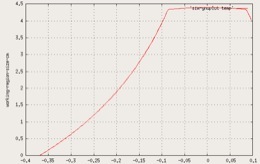SnooperScope Biopsy Probe: Actuation Feasibility Study
2007
Executive Summary
The ability to detect disease early, and to monitor disease progression, could be greatly enhanced if we had the ability to retrieve fluid and/or tissue samples directly from extremely difficult-to-access regions of the human body such as the fallopian tubes. This project investigates the issues associated with applying magnetic actuation forces to remotely propel a sample-collection probe within a narrow, fluid-filled channel. Through simulation and physical experimentation, we have shown that under ideal conditions it is possible to remotely propel an untethered magnetic probe through a fluid-filled tube using actuators located a significant (8-inch) distance away. This can be achieved without significantly displacing (pumping) the fluid, using very gentle forces, at modest cost, and with practical control and timing constraints. A set of recommendations for next steps, involving a combination of physiological experimentation and technology development, are provided.
Project Information and Demonstration Video
Video summarizing the Snooperscope project’s results to date
Magnetic Actuation Simulator (available for download under Gnu Public LIcense)
Project Summary Report (in PDF format)
Acknowledgments
This work benefitted greatly from discussions with Professor Pat Brown of Stanford University and with Dr. Chana Palmer of the Canary Foundation. Thanks also to Professor Sam Gambhir at Stanford for providing valued guidance and insights. This work was made possible by support from the Canary Foundation.
Towards a magnetic biopsy probe
for early disease detection and diagnosis

Organizations:
Stanford Medical School - Brown Lab &
Berlin Science and Technology
Primary Investigator:
Andrew A. Berlin, Ph.D.


Canary Foundation Support:
This project was motivated by discussions among members of the Scientific Advisory Board of the Canary Foundation, an organization dedicated to development of methods for the early detection of cancer. The Snooperscope feasibility assessment was funded in part by the Canary Foundation’s technology seed-project program.
Copyright (c) 2007 Andrew A. Berlin